Canon introduces the EOS Ra, a version of their 30-megapixel, EOS R full-frame mirrorless camera designed specifically for astrophotography.
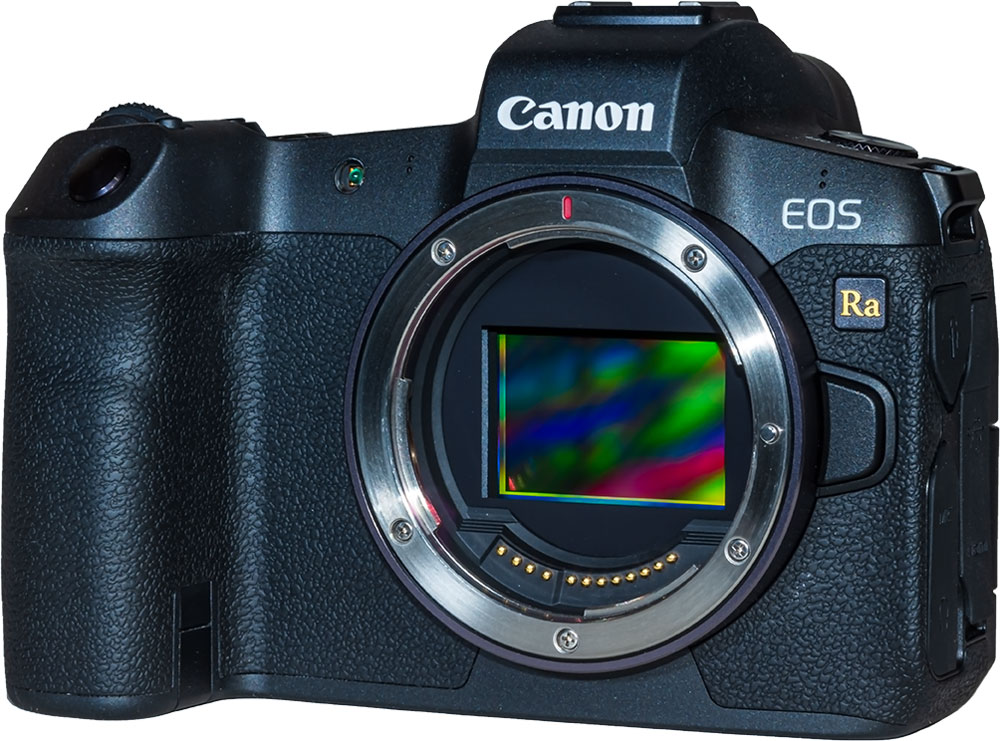
At long last, Canon has re-entered the astrophotography market with the release of its EOS Ra Mirrorless camera (estimated price: $2,499). While most DSLR and mirrorless cameras work well for general photography, they often require modification to perform best while imaging the night sky. This is the third “a” camera from Canon after their 20Da in 2005 and 60Da in 2012, both cropped-frame DSLRs.
We received an advanced sample of the EOS Ra from Canon USA, to expand upon the review already underway of the stock EOS R that will appear in an upcoming issue of Sky & Telescope. Both cameras perform identically for noise and image quality.
The EOS Ra differs from the stock EOS R in its greater red sensitivity (due to a special infrared cut-off filter), factory-calibrated white balance, and 30x Live View magnification.
Outperforming the 60Da
All consumer digital cameras have a filter mounted in front of the sensor that cuts out infrared light that would otherwise add an unfocused haze over the image. But filtering out IR also filters out most of the hydrogen-alpha light in the deep red region of the visible spectrum emitted by nebulae.
Not so with the EOS Ra. Its factory-installed IR-cut filter transmits a much higher level of the 656.3-nanometer emission line of hydrogen-alpha emitted by star-forming regions in the Milky Way and other galaxies.
It appears Canon has fitted the EOS Ra with a filter that transmits a higher level of the H-alpha line than on its earlier “a” cameras. Canon claims it is four times higher.
While we couldn't confirm that number, the Ra's performance does seem to be on par with my filter-modified Canon 5D Mark II that I have used since 2009. My venerable 5D MkII is an example of a DSLR modified by a third party, in this case by Astro Hutech.
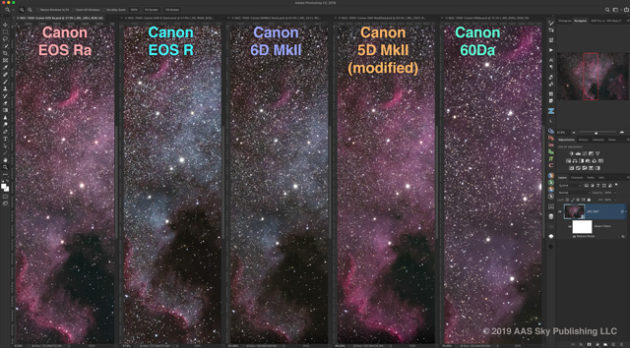
And yet, despite its special filter, the Ra can be used for normal daytime photography using Auto and Daylight white balance. Color correction filters are not needed.
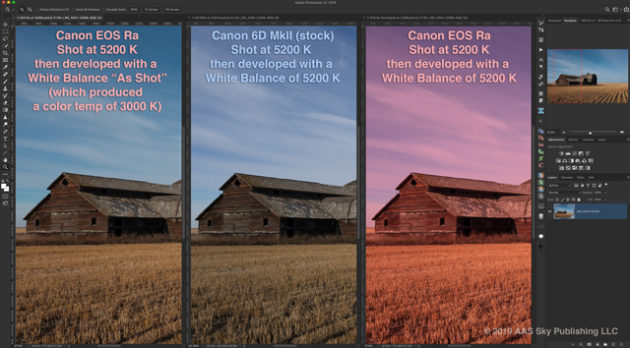
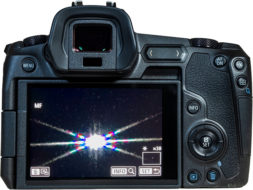
Both the EOS R and Ra offer a bright Live View screen making it much easier than with most DSLRs to frame scenes at night. The EOS Ra, however, has a welcome firmware upgrade from the standard EOS R that benefits astrophotography. Instead of the usual 10x, the EOS Ra offers a 30x magnification in Live View, great for achieving accurate focusing on stars, especially with wide-angle lenses.
The EOS Ra proved identical to the stock EOS R for noise. Both cameras’ 30-megapixel sensors have 5.34 micron-square pixels.
At the high ISOs we typically use for astro-imaging, the R cameras exhibit noise levels that are as good as, if not slightly lower than Canon's 6D MkII, despite the latter’s larger 5.7-micron pixels. Read more about the cameras' performance comparison to competing models in an upcoming issue of Sky & Telescope.
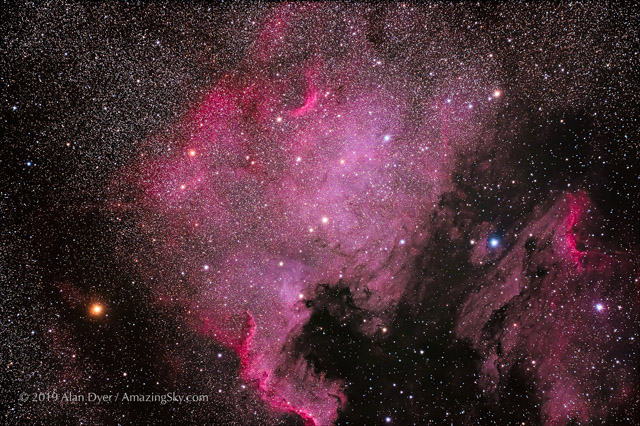
 5
5
Comments
Curtis Urban
November 7, 2019 at 12:34 pm
Dear Sky and Telescope,
I own several Canon 60Da cameras
Is it possible to get a better comparisons with the Canon 60Da?
The article is very good however the photo in the article is very limited for the comparison...
I contacted Canon and they have limited information and nothing on the sensor
Does Sky and Telescope have one of these cameras for a better comparison?
So how about the sensor comparison on wavelengths etc.
Is S&T going to do an article in the magazine on this product?
Thanks Curtis
Please email back at [email protected]
You must be logged in to post a comment.
Monica Young
November 8, 2019 at 8:02 pm
Hi Curtis - great question! Yes, this is just a first look. An upcoming Sky & Telescope article will do a more in-depth review of this product.
You must be logged in to post a comment.
dandalo1961
January 20, 2022 at 3:13 am
Still no upcoming article about the Canon Ra ??
You must be logged in to post a comment.
segami21
February 8, 2021 at 5:33 pm
Hello, Thanks for the article. It was very informative. I would very much like to see an in depth article on the Canon EOS 5R vs the Ra. I am a landscape photographer and would like to get into Deep Sky Astrophotography. I cannot seem to find much information on the EOS Ra being used as a regular landscape camera or if the R5 would be the better choice for doing both fields of work.
You must be logged in to post a comment.
Sean Walker
February 9, 2021 at 10:04 am
From Alan: I have not used the Canon R5 but tests at sites such as DPReview.com show it has very low noise for such a high megapixel camera. Even so, for low-light, high-ISO nightscapes, the R6 is likely to be the better camera for even lower noise levels. Of course, for daytime landscape photography, the higher resolution of the R5 is very attractive, especially if large art prints are the goal. The Ra can be used for daytime work as well, as the color balance has been corrected by Canon in the Ra’s firmware to provide fairly normal white balance for daytime use. But reds will always be accentuated — sunsets and twilights look particularly vivid with the Ra! So for work where accurate color balance is required, the Ra is not a good choice. It is excellent for all forms of astrophotography, both nightscapes and tracked deep-sky imaging.
— Alan Dyer
You must be logged in to post a comment.
You must be logged in to post a comment.